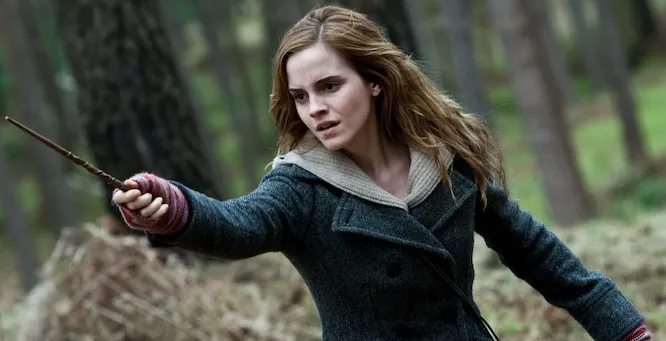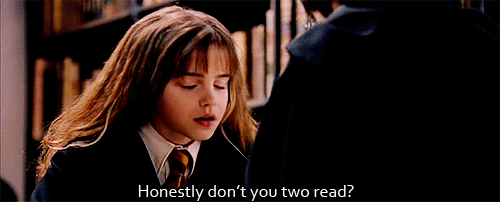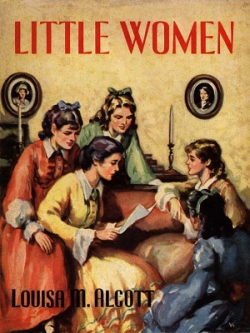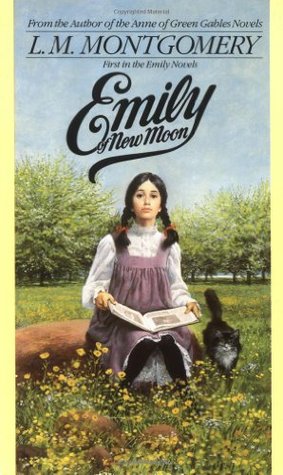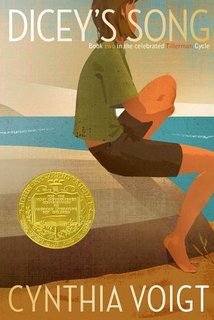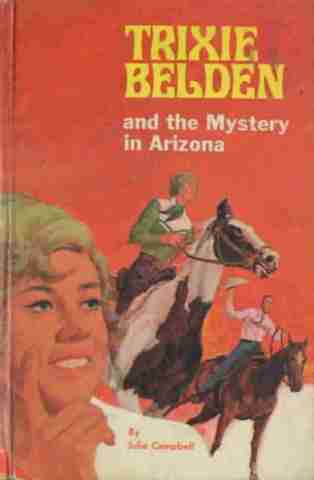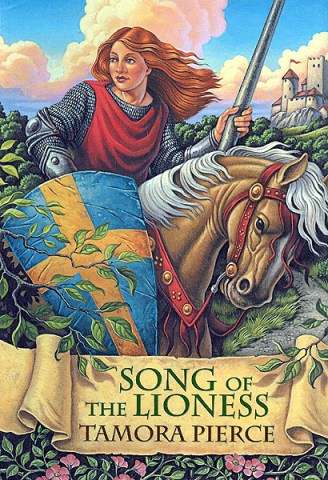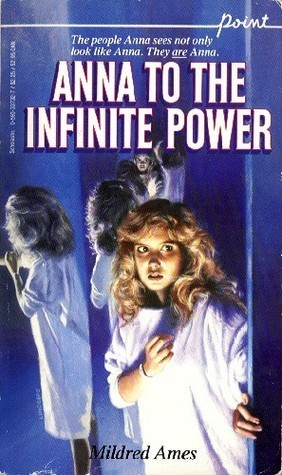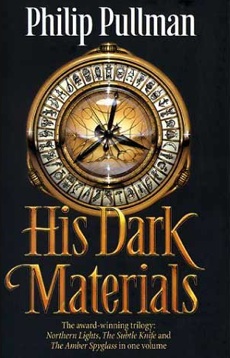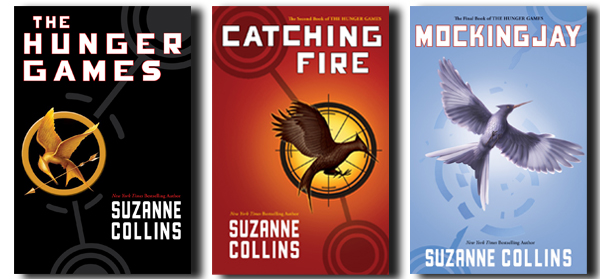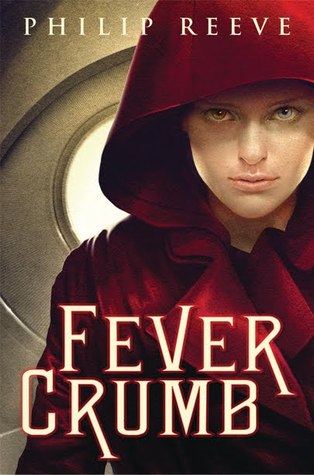We are living in a post-Hermione world. Hermione Granger is often the gold standard to which any subsequent heroines in children’s or YA literature are held.
This is not a bad thing—not in the slightest! Hermione was the brightest witch of her age, after all. She was actively instrumental in not only saving the Wizarding World as we know it, but also in keeping Harry alive long enough to get to the point that he could even think about facing Voldemort.
Hermione punched Draco Malfoy, figured out Polyjuice Potion, and refused to wait around for her crush to pull his head out of his butt and got herself a date to the dance all on her own. Hermione was not too perfect—she could be a little bit insufferable and could ride a crusade into the too-far zone with ease and without enough forethought. Heck, being on the Honor Roll went to my head pretty hard as a junior high kid, so I understand those feels!
Hermione used a time-travel device and didn’t screw it up. She didn’t abandon Harry when the going got rough, she didn’t hold Ron’s temporary abandonment against him for too long, and she was willing to sacrifice her parents’ memory of her very existence to keep them safe. That’s a hell of a track record right there, and a lot for subsequent heroines to live up to!
We keep hearing about “strong female characters.” It’s kind of a thing right now to write books that have them, and a lot of writing about what exactly that means is published in every bloggy little corner of the Internet. Some people are glad, others feel that “strong” is too masculinized. It’s a good thing that there are a lot of different ways to be strong, right? My own interpretation of what it really means to present “strong female characters” is that the characters are written as people with faults, strengths, and their own values and personalities.
The way J.K. Rowling wrote Hermione leaves us with a clear idea of what Hermione might like and dislike about a given situation. We know that Hermione hates injustice; she created S.P.E.W. and stood up for the rights of the house elves. We know that Hermione is trustworthy; McGonagall trusted her with a Time Turner. We also know that, especially in her younger years, Hermione could get a little bit judgmental about the study habits and proclivities of others and had difficulty allowing others a chance to shine in the classroom.
In short, the author made a character who seems like an actual human being. Hermione isn’t a warrior, not really. She fights because she believes it to be necessary. The strength of her character is not in her ability to lift cars and throw them at the faces of bad guys. It is in her appeal to all of the Hermiones of the world—girls who know the answer and aren’t afraid to give it.
Hermione wasn’t born in a vacuum; there are other heroines who came before and there have been others who came after, and there are many, many more yet to be created! Just because I consider Hermione to be my Gold Standard Heroine should not negate the efforts of her predecessors, nor should it mean that every subsequent heroine should be a Hermione knock-off. Human beings are famous for the having of differences, quirks, personality issues, strengths, weaknesses, and personal hurdles to jump to become the individuals we are meant to be.
Without further exposition, here are some of my top favorite YA/Children’s book heroines, in no particular order.
1.) The March Sisters and Marmee – Little Women by Louisa May Alcott
So, my Library Science flag (do we have a flag?) is flying high with this article! I learned in one of my classes that one of the first novels considered to be Young Adult and written for young women was Little Women, by Louisa May Alcott in 1868/1869. She published it in two parts and wrote it fairly rapidly after the first part was wildly successful. If you have never read Little Women, I recommend it. It’s older—the girls’ father is off fighting in the Civil War, and the roles of women in society are very limited.
Nonetheless, the March women are making life work, not only for themselves, but also for less fortunate families. Each woman has her own personality and interests: Meg, the eldest, is very practical, ladylike, and calm; Jo is wildly intelligent and bristles at the limitations placed on her by her gender; Beth is gentle, sweet, musical, and a natural peacemaker, and Amy is emotional and artistically inclined; their mother works tirelessly to aid wounded soldiers and care for her girls, and Jo helps to support her family with her writing, teaching, and caring for a cranky old misanthrope of an aunt.
For me, this book was an excellent early study in creating female characters who are the focus of the story, each strong and weak in different areas of life and always able to rely on the other women in their family for support and love. Jo is my favorite. She’s probably intended to be the favorite, but let’s take a moment to appreciate a book written for young women by a woman in the 1860s featuring a tomboy character who has to hide her scorched dress from view at a party and openly laments that she was not born male. Jo March, I loved you when I met you, and I love you today.
Have a look at this clip from Friends. Little Women is Rachel’s favorite book, and Joey is reading it:
2.) Emily Starr – Emily of New Moon by L.M. Montgomery
I loved Anne of Green Gables—I really did—but Emily of New Moon was my favorite of L.M. Montgomery’s Heroines of Places books. (Anne of Green Gables, Jane of Lantern Hill, Rilla of Ingleside, Pat of Silver Bush, etc.) Emily was like Anne Shirley’s weird Wednesday Addams goth cousin. Where Anne was upbeat and imaginative, Emily was chill and dreamy. Where Anne was the embodiment of “the plucky orphan,” Emily was orphaned and pissed about it.
Despite their differences, I feel like if they had met, they would have gotten along well. Emily, for as introverted as her character was written, was an excellent friend, and Anne, as extroverted as she was written, was loyal and creative. Emily was prone to bouts of overly dramatic teen angst and soldiered through it with frank acceptance. If Emily had had the Internet, she would have been a quirky, unapologetic Tumblr girl, I’m certain. I’m not entirely sure she wouldn’t have “shipped” Teddy and Perry, given half a chance. Emily’s strength of character is in her determination to write and find ways to achieve her goals despite her stern Aunt Elizabeth’s disapproval of her craft.
Where there is a will, there is a way, and Emily Starr was skilled in finding that way to express herself unashamedly. If Emily were a real person and lived in today’s society, she would have been the reigning queen of Ao3 and Tumblr, I’m pretty darn sure.
3.) Dicey Tillerman – Homecoming and Dicey’s Song by Cynthia Voigt
I think I read these books for the first time when I was in the 6th grade, and even then I was struck by Dicey Tillerman’s practicality and determination. She was only thirteen years old when her mother abandoned her and her siblings in a mall parking lot, and she budgeted, worked, and walked their way to find distant family members in an age before the onset of cellular phones and Internet access. She couldn’t just Google her aunt and then her estranged grandmother and GPS their addresses; she had to research, find them, and navigate, all while keeping her younger siblings alive, healthy, and reasonably distracted from the seriousness of their situation.
Dicey was a different kind of heroine than I was used to. The Tillerman books are not fantasy and have no magic or science fiction in them. I usually gravitate toward genre fiction, but Voight’s excellent character and world building skills saw me hooked on the Tillermans. Dicey didn’t care about her appearance—she was often mistaken for a boy and this did not bother her. Dicey’s heroism was in her care for her siblings, her incredible intelligence in tracking down family members she had never even met before, and in defeating the everyday monsters of hunger, poverty, mental illness, and in learning to trust others.
4.) Trixie Belden – The Trixie Belden Mystery Series by Julie Campbell and Kathryn Kenny
Plucky young detectives were kind of a thing there for awhile. Nancy Drew, The Hardy Boys, Trixie Belden, etc. were all pretty much ghost-written-by-formula and cranked out by big publishing houses. That said, Trixie Belden was always just a little bit different. Julie Campbell Tatham wrote the first six books, and then many authors under Western Publishing’s Kathryn Kenny pseudonym wrote the rest of the 39-book series. It’s my belief that those first six books by Julie Campbell set the tone, characterization, and setting in a way that made even the subsequent titles in the series a little more grounded than the average ghost-written mystery series.
I prefer the perpetually 14-year-old tomboy Trixie to the eternally 18-year-old polished Nancy, even though I do still have a soft spot for Nancy, as well. Trixie spoke more to my junior-high and elementary school fears and concerns than Nancy did. Trixie fought with her brothers and friends, resented having to do chores, jumped to conclusions, and said things in a fit of temper that she later regretted. She also was more often than not right to have been suspicious, her instincts about others and her skills of observation were excellent, and she always stood up for what she thought was right. She positively influenced her timid best friend to overcome the lingering effects of a long illness, helped rescue a runaway orphan who later became a good friend and crush, learned that her instincts could be occasionally off when she jumped to conclusions about a new student in school, bravely faced down a possibly-rabid dog, and organized charity events to help those less fortunate.
On top of all of that, she loved her family and friends and often worried about how she compared to her “girlier” friends. With the exception of dealing with mysteries, kidnappers, and counterfeiters, she reflected my own insecurities, interests, strengths, and weaknesses. I still love you, Trixie Belden. Your series may have ended, but we’ll always have our Internet fandom to cling to for new material and memories!
5.) Alanna – Song of the Lioness series by Tamora Pierce
The adventures of Alanna were possibly one of the first longer fantasy series I ever attempted in upper elementary and junior high school. Alanna and her twin brother Thom were to be sent off for education that did not suit their interests. Alanna longed to be a knight, and a lifetime of fighting was the last thing scholarly Thom wanted. They traded places, and Alanna hid her gender to get the knight training she wanted more than anything.
One of the best things about the Alanna stories is that yes, she wanted to fight, and yes, she was a very adept student, but she remained a very accessible young girl to the reader. She fought for success, scrambled to keep her gender hidden, and dealt with the difficult realities of puberty while having to keep it hidden from those closest to her. In the later books where she’s an adult and her gender is no longer a secret, she’s allowed to be sexual without being defined by her sexuality. She is lovers with a prince, a famous martial artist, and with a King of Thieves (George Cooper, I love you forever. Love, Sara Goodwin), and even allowed to “settle down” into a marriage relationship where she is able to retain her career, which is important to her character, without judgment. Alanna got to truly have it all, but it never seemed trite or too easy—she worked hard to get the things she had and to maintain her relationships.
Alanna is a sword-wielding heroine who shines on and off of the battlefield.
6.) Anna – Anna to the Infinite Power by Mildred Ames
This was one of those random books you find at the library when you’re a kid and have all the time in the world to browse. No one recommended this book to me; no one handed it to me and said, “You should read this,” the way they did with the Alanna series. I was just sitting on the floor, digging through the lower shelves for things to read, when I came across Anna to the Infinite Power. Anna is a 12-year-old math genius who lives with her family in a slightly futuristic (for the 1980’s) version of our world. She finds out that she is one of many Annas who are the result of a cloning experiment and faces possible erasure and imprisonment at the hands of a scientist determined to use her for personal gain.
Anna was heroic in her intelligence in figuring out what was happening to her and in using her intelligence to get herself out of dangerous situations. Her main ally is her brother, Rowan, who does rescue her at one point but is not played as a rescuing hero type—just as a brother who is worried about his extremely intelligent sister. I don’t want to wreck the plot twists for anyone who hasn’t read this one, so I won’t say too much. I loved Anna because it wasn’t that common back then for a book to star a math/science genius girl, and because for all her intelligence, her character ran the gamut of emotional depth: she was happy, sad, scared, determined, and diligent in trying to uncover her mysterious origins.
It’s not everyday a girl discovers that she is both one of many and yet also an individual. It was a cool concept for a book, and I still recommend it. Anna is a true STEM heroine.
7.) Lyra Belacqua – His Dark Materials by Philip Pullman
Lyra is actually my favorite thing about this series. I love the idea of a scrappy little expert liar being the heroine of an epic fantasy series. Lyra is far from always pleasant, but she is loyal to those she considers friends, and will do anything, especially lie like a rug, to help them. Although she is a rather unapologetic liar, Lyra is not a bad child. She expresses horror when she finds out what her mother, Mrs. Coulter, is involved with, and her determination to rescue her friend Roger is what motivates her to keep going.
Lyra is so much more than a dishonest kid. (Although she’s really pretty good at that designation!) She bravely faces down Iorek Byrnison and backs him stubbornly in gaining his throne back. When Lyra makes a friend, she makes a friend for life, and it is this trait (as well as her silver-tongued nature) that draws me to her. Lyra, you’re my kind of wide-eyed, lying, well-intentioned little optimist!
8.) Katniss Everdeen – The Hunger Games series by Suzanne Collins
Yes, The Hunger Games is everywhere. Yes, it’s “too popular” right now, but it’s still a really good story with truly interesting characters faced with heartbreaking decisions. Let’s get something straight: whenever something becomes mainstream, there are people waiting in the wings to over-analyze it and tear it down. When bands we love succeed and become popular, we often say that they “sold out.” When a loved book series becomes a blockbuster film series, people often say that it’s become “too commercial,” and “they didn’t do x,y, or z ‘right'”—whatever those things actually mean.
Personally, I’m happy for musicians who find themselves suddenly able to afford a better life for themselves and their families and rejoice that their efforts have resulted in success, and I’m happy for authors who find that their books have appeal on a big screen as well as in the imaginations of readers. After all, if I don’t like the movie, it’s not like the book version has been erased from this world. Katniss was never intended to be a perfect character; perfect characters are boring.
Katniss is a skilled archer, survivor, and leader, but she didn’t wake up one morning and say to herself that those were her life goals. Katniss learned these skills because they were the only way to maintain her own and her loved ones’ survival. Above all else, Katniss does the things she does to protect the ones she loves, and she learns along the way that those actions can be genuinely inspiring to others as well. Sometimes, you do the right thing for reasons that you don’t even fully understand. While she is lauded by others as a hero, standing up for the people against the government, in reality, it all started because she loved her little sister and couldn’t bear to lose her. Everything else was just a side effect of that original impulse.
Katniss is heroic not only because of her skill with a bow and her symbolism to the oppressed people of Panem, but because she is motivated by her protective instincts. I also appreciate that Katniss does not come out of her experience unscathed. Like many who fight for their conscience and what they believe to be right, Katniss Everdeen—hunter, fighter, and protector—suffers from PTSD in connection to her experiences and has difficulty rejoining society in a semblance of a normal life after the events of the books.
9.) Fever Crumb – The Fever Crumb Series by Philip Reeve
I’ve recommended this series before, and I’ll do it again! Fever Crumb is the name of a young girl, raised by a sect of hermetic scientists in a post-apocalyptic London. Fever is very much unlike other girls she has seen—she’s practical to a fault and is often bewildered and overwhelmed by the emotions of others. She even keeps her head shaved like the male scientists do, because they see hair as an adornment for which they do not have time.
Early in the story, she is sent on her first solo scientific mission to aid an archaeologist with his work. She ends up being responsible for his children when tragedy strikes and must save herself as well as protect two innocent children from an increasingly dangerous situation. Fever is no babysitter. She’s not even in touch with her own emotions to understand the things that might upset a small child. Nonetheless, she attacks childcare with scientific determination, using her intelligence to get herself and the children out of danger and into safety.
I love her because she’s a fish out of water, not just with things that are stereotypically “feminine,” but also because she’s just as out of touch with many things that are stereotypically human—love, sex, aesthetic appearance, motivations, etc. She’s so damn smart that she figures it all out, but it’s refreshing to see a heroine who struggles with things that are mundane and ordinary to most people, while excelling at very esoteric corners of academic expression. Fever, you’re my Science Heroine, and I love that little kids confuse you! I know those feels!
10.) Alina Starkov – The Grisha Trilogy by Leigh Bardugo
I have a soft spot for an underdog/”ugly duckling” tale. Alina Starkov was kind of both. When we meet her, she’s a low-level Cartographer’s Assistant in the army. She’s smallish, sickly, and is described as “sour-faced.” She’s not even a particularly good mapmaker. When her best friend Mal’s life is in serious danger, her dormant magic is unlocked when she lashes out to save his life. It turns out that she’s much, much more than anyone ever thought.
Her appearance and health have long been affected by the dampening of her magical abilities—it turns out that she was meant to be Grisha, one of The Darkling’s magical force of specialized magic users. Better than that, she’s the Sun Summoner, on equal footing with the mysterious Darkling himself. Let’s take a moment to appreciate that in Leigh Bardugo’s world, it is just accepted as the norm that both men and women serve in the military, and that even a woman who is a lackluster attempted-cartographer was still able to carve out a (albeit mundane) career for herself.
Alina is funny, confident and cool, all while being afraid of her own power, confused about her feelings for Mal, and occasionally peevish about minor inconveniences. She’s very human, and her point of view is refreshing, even when the character is acting in a way that the reader might find annoying. The author doesn’t go the route of making Alina an instant knockout beauty once her magic is freed, either. She makes her appearance improve, and with the help of flattering wardrobe and makeup, Alina learns how to look her personal best by playing up her assets. That is so much more realistic than having her immediately glow with magical beauty. The implication was that Alina was always fairly attractive underneath her illness and strained magic, and that she was now able to appear as herself. Throughout the series, Alina matures and grows as a character, and learns to balance her own personal happiness with the fate of the world. Themes of friendship and forgiveness abound, as well as the importance of an emotional connection over physical beauty in the romantic relationships in the story.
The heroines in the above list have in common that they are young women who are active protagonists who are defined by their own values, powers, strengths, weaknesses, and relationships with others, just like regular, real people. We all “fight” in different ways. Some of us write, like Emily and Jo; others serve military positions, like Alanna and Alina; some, like Dicey, Trixie and Lyra learn to “fight” with their wits and their words, while Anna and Fever use science and logic. These “strong female characters” mirror the complexity inherent in being human, and like Hermione, inspire future authors to take a moment to consider the breadth of possibilities that exists under the umbrella of “strong” female characters.
Sara Goodwin has a B.A. in Classical Civilization and an M.A. in Library Science from Indiana University. Once she went on an archaeological dig and found awesome ancient stuff. Sara enjoys a smorgasbord of pan-nerd entertainment such as Renaissance faires, anime conventions, steampunk, and science fiction and fantasy conventions. In her free time, she writes things like fairy tale haiku, fantasy novels, and terrible poetry about being stalked by one-eyed opossums. In her other spare time, she sells nerdware as With a Grain of Salt Designs, Tweets, and Tumbls.
—Please make note of The Mary Sue’s general comment policy.—
Do you follow The Mary Sue on Twitter, Facebook, Tumblr, Pinterest, & Google +?



